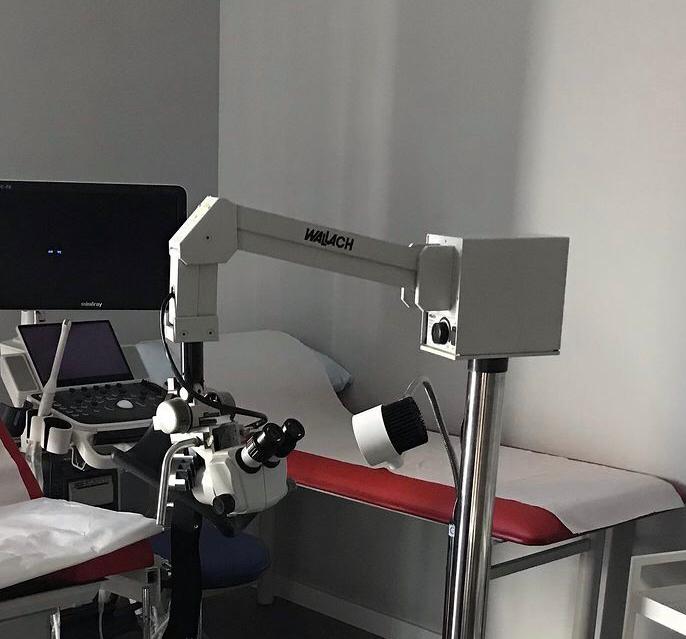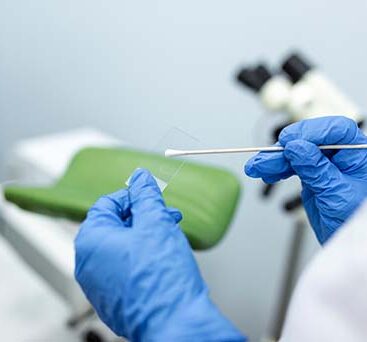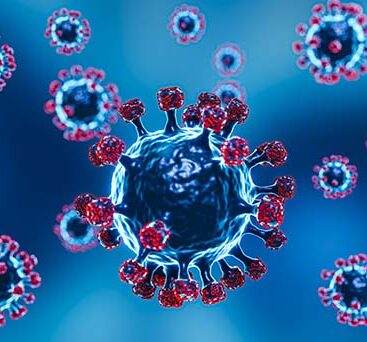
Prof. Dr. Onur Topçu
Gynecology and Obstetrics Specialist
The information provided below about medical conditions is not for advertising purposes. These are articles aimed at informing and promoting patients. If you think you may have one of the diseases listed below, we strongly recommend that you seek medical advice and treatment from specialized health professionals.
Human Papilloma Virus (HPV) and Cancer
The Human Papilloma Virus, HPV, is now proven to be almost the sole cause of cervical cancer. For this reason, HPV-positive women should be under the control of a doctor not only for the treatment of genital warts that cause a bad aesthetic appearance, but also for the follow-up and treatment of cellular changes that HPV may cause.
With 20 years of gynecological experience, I perform both the removal of genital warts (cautery excision, cold excision, chemical agent destruction) and the treatment and follow-up of HPV types that carry a risk for cervical cancer.
An HPV DNA test should be performed to detect the presence of HPV. HPV DNA test is performed in our clinic for an affordable fee. Please call for an appointment.
To create your appointment via WhatsApp
by clicking here
you can contact us.
In our clinic, we monitor and treat changes in the cervix with the most advanced binocular colposcopy device you can see below.

Human Papilloma Virus (HPV) What is it??
There is a large family of Human Papilloma Virus (HPV). Each HPV type in this family is identified by a number. Over 300 types of HPV have been identified so far.
Most HPVs cause warts on the skin; on the arms, chest, hands and feet. Other HPV types also cause infection of the mucous membranes. The mucous membranes form the superficial layers of organs that open to the outside, such as the vagina, anus, mouth and throat. HPV types found in mucous membranes are also called ‘Genital HPV’. This type of HPV usually does not live on the skin. HPV types are divided into 2 main groups. These groups are high-risk HPV types and low-risk HPV types.
Low Risk HPV Types
Some types of HPV can cause warts (condylomas) on or around the genital area and anus in men and women. In women, warts (condylomas) can develop on the cervix (cervix) and vagina. These HPV types rarely cause cancer, so they are called low-risk HPV types.
High Risk HPV Types
Other types of HPV are called ‘high-risk’ because they can cause cancer in both men and women. Doctors are more concerned about cell changes and precancerous lesions linked to these HPV types because they can lead to cancer after some time. High-risk variants of HPV most commonly include HPV 16 and HPV 18 types.
Infection with HPV is very common. In most people, the body can clear the infection on its own. But sometimes, the infection cannot be cleared. Chronic infections (long-term) with high-risk HPV types can develop into cancer after a while. This period is between 5 and 15 years on average. This means that a woman who has been consistently positive for high-risk HPV for 5 to 15 years is at serious risk of cervical cancer.
Human Papilloma Virus (HPV) How is it transmitted?
HPV is almost always transmitted from one person to another through sexual intercourse. However, it can also be transmitted through genital contact, i.e. skin-to-skin contact, without sexual intercourse. The main sexual activities through which HPV is transmitted are vaginal, anal or oral sex. HPV can also be transmitted from an HPV positive person without visible lesions.
HPV infection is very common. Most women or men are exposed to at least one type of HPV in their lifetime.
Human Papilloma Virus (HPV) is not transmitted in these ways
- Toilets
- Handshake
- Swimming pool or saunas
- Shared utensils or shared meals
You may have Human Papilloma Virus (HPV)
- You have had sexual intercourse before, even if you have not had an active sexual life for years
- Even if there are no signs and symptoms
What are the Cancers Associated with HPV Infection?
Cervical Cancer
Cervical cancer is the most common cancer associated with HPV. Almost all cervical cancers are caused by HPV. Cervical cancer is one of the types of cancer that can be caught and prevented at an early stage. The Pap smear test detects changes in the cervix caused by HPV. The HPV test also detects the HPV infection itself.
Cervical cancer is preventable with vaccinations and regular screening tests (pap smears). Half of women diagnosed with cervical cancer have never had a pap smear test in their lifetime.
Vulva Cancer
There is no standard screening test for vulvar cancer like there is for cervical cancer. HPV can cause cancer of the vulva, the outer part of the female genital tract. However, vulvar cancer is less common than cervical cancer.
Vaginal Cancer
The majority of vaginal cancers are caused by HPV. Changes caused by HPV can sometimes be seen incidentally on a pap smear. Vaginal cancers, like cervical cancer, develop into cancer after precancerous lesions. However, there is no screening test for vaginal cancers. However, vaginal cancers are less common than cervical cancer.
Penis Cancer
HPV can cause penile cancer in men. However, this is most common in HIV-positive men. Since the precursor lesions occur mostly at the tip of the penis, they can be recognized early and diagnosed early.
Anus Cancer
Anus cancer can occur in both men and women. HIV-positive women or men with HPV infection are at high risk of anus cancer if they have anal intercourse. People at high risk can have a routine screening matched anal pap test.
Cancer of the Mouth and Larynx
HPV can also be found in the mouth and larynx due to transmission through oral sex in men and women. It can infect this area and cause cancer of the mouth and larynx.
Can HPV Infection be Prevented?
There is not yet a method to protect against infection with all HPV types. However, there are strategies that can reduce the risk of HPV infection. Vaccines are also available to protect young people against HPV types that can often cause warts (condyloma) and cancer.
HPV can be transmitted through sexual intercourse as well as through skin-to-skin contact. People with multiple sexual partners are therefore at risk. Since a person who carries HPV may not have any signs or symptoms, they may unknowingly transmit HPV to other people.
Condom Use
Condom use can partially protect against HPV infection, but not completely. Because a condom will not always cover the HPV-infected area. Since HPV can also be found in the penis, vagina, vulva, scrotum, anus or perineum, a condom will provide partial protection.
Having sexual intercourse with one partner
If you are sexually active but have only had intercourse with one person, you will not be fully protected against HPV if the person you have had intercourse with has had other sexual relationships. Therefore, sexual intercourse with one partner will not always prevent HPV infection.
HPV Vaccines
HPV vaccines will protect against HPV types that are proven to be associated with cancer and HPV types that cause genital warts (condyloma).
The vaccines are approved for use in both men and women. Vaccines protect against HPV infection, they do not treat existing HPV infection.
- HPV vaccines are most effective when given between the ages of 9 and 12.
- Unvaccinated teenagers and young adults aged 13-26 years should be vaccinated as soon as possible.
- After 26 years of age, vaccination should be individualized.
HPV DNA Tests
Today’s HPV tests are approved for women with a cervix (cervix). The HPV DNA test is performed in the same way as the pap smear test. During a gynecological examination, a swab is taken from the cervix.
- There are no HPV DNA tests approved for the penis, vulva, mouth, anus or larynx.
- There is no test to determine exposure to all HPV types.
Treatment of HPV and HPV-Related Diseases
There is no cure for HPV yet, but there are treatments for the cellular changes caused by HPV.
Cancers caused by HPV are among the easiest types of cancer to treat if caught early. Visible genital warts can also be treated surgically or medically.
Things to remember about HPV
- HPV is a very common virus. Most women and men will be exposed to HPV at some point in their lives.
- There is no cure for HPV. There is a treatment for the cellular changes caused by HPV.
- Being HPV positive does not mean you will get cancer. Approximately 90% of HPV is cleared from the body spontaneously.
- People who take medicines that affect the immune system or have chronic diseases are at greater risk of cancers caused by HPV.
- Most cancers that develop after HPV infection can be prevented with vaccines.
- Most cervical cancers can be prevented by routine screening tests (pap smears).
Stay healthy.
Assoc. Dr. H. Onur Topçu
Gynecology & Obstetrics – IVF and Advanced Gynecologic Endoscopy Specialist
PATIENT COMMENTS
Onur teacher was very supportive and encouraging at every stage from the very beginning of the process to the postoperative period. He informed us in the best and correct way by explaining all the details of the process in a complete and clear way. I would like to thank Onur Hoca very much and definitely recommend him to those who are looking for a doctor in this field.
Arz*** A***




